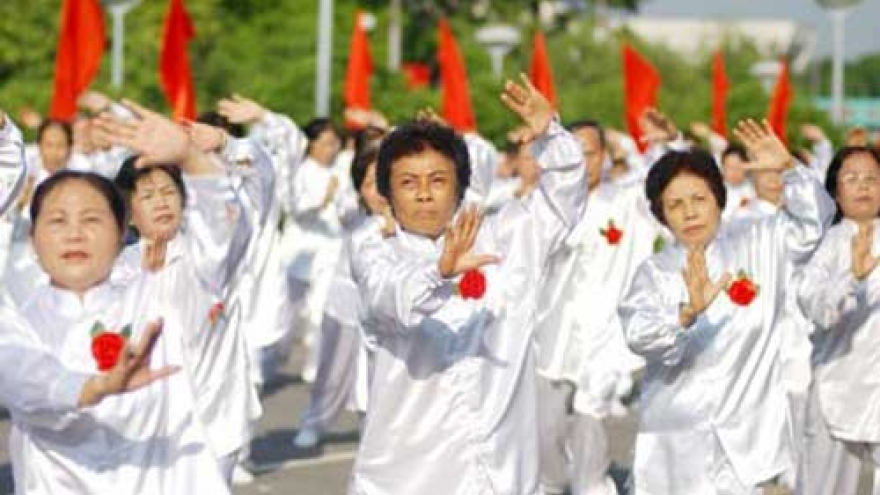Womb-to-tomb policies needed to tackle labor force decline
East Asia is aging faster than any other region in history, and some middle-income and wealthier economies could lose as much as 15% of their working-age population by 2040, according to a new World Bank (WB) report.
The report, Live Long and Prosper: Aging in East Asia and Pacific, finds that 36% of the world’s population ages 65 and over, or 211 million people, live in East Asia, the largest share among all regions.
By 2040, the graying of the population could shrink the number of working-age adults by more than 15% in the Republic of Korea (RoK) and more than 10% in China, Thailand and Japan. In China alone, that would translate into a net loss of 90 million workers.
The rapid pace and sheer scale of aging in East Asia raises policy challenges, economic and fiscal pressures, and social risks. Without reforms, for example, pension spending in the region is projected to increase by eight to 10% of gross domestic product by 2070.
Meanwhile, most East Asian health systems aren’t prepared for age-related spending, as cancer, heart disease, diabetes and other chronic illnesses could account for 85% of all disease burdens by 2030. In addition, today’s older population is less likely than previous generations to have adequate family support.
“East Asia Pacific has undergone the most dramatic demographic transition we have ever seen, and all developing countries in the region risk getting old before getting rich,” said Axel van Trotsenburg, regional vice president of the World Bank’s East Asia and Pacific Region.
“Managing rapid aging is not just about old people, but requires a comprehensive policy approach across the life cycle to enhance labor-force participation and encourage healthy lifestyles through structural reforms in childcare, education, healthcare, pensions, long-term care, and more,” he added.
The report examines how aging may affect the drivers of economic growth in the region, as well as patterns of public spending. It reviews current policies and provides recommendations on how countries with diverse demographics can address challenges in the labor market, social security systems, and health and long-term care.
It also looks at how older people currently live, work and retire across the region.
 |
Rapid aging in East Asia is partly a result of the region’s breakneck pace of economic development in recent decades, the report says.
Higher incomes and better education have led to steady increases in life expectancy, and have been accompanied by sharp declines in fertility rates, with a growing number of countries now well below replacement levels.
As a result, by 2060, one in five of the oldest countries in the world will be in East Asia, compared with just one in 25 in 2010.
The pace of aging varies across countries. Richer countries, such as Japan, Singapore and the RoK, are “advanced agers,” with 14% or more of their population already at least 65 years old.
In younger and poorer countries, including Cambodia, Laos and Papua New Guinea, only four percent of their population is older than 65, but they will begin to age rapidly in 20 to 30 years.
Developing middle-income countries, such as China, Thailand and Vietnam, are already aging quickly and face some of the most pressing challenges in managing aging.
“It is possible to manage aging while sustaining economic dynamism in East Asia Pacific, but it requires tough policy decisions and significant behavioral change on the part of workers, employers and society in general,” said Sudhir Shetty, chief economist for the East Asia and Pacific Region of the World Bank.
“The region’s demographic and epidemiological transitions require proactive policy responses on pensions, health care and labor markets.”
East Asia has several advantages in addressing aging. East Asians already work longer than their counterparts in other regions. They have high savings rates across all ages, rapidly rising education achievements, and social security systems with fewer costly legacy entitlements.
“Demography is a powerful force in development, but it is not destiny,” said Philip O’Keefe, lead author of the report. “Through their policy choices, governments can help societies adapt to rapid aging and promote healthy and productive aging.”
The report recommends a range of pressing reforms:
In the labor market, countries as diverse as Japan, Malaysia and Fiji can encourage more women to join the labor force, especially through childcare reforms.
Meanwhile, countries like China, Vietnam and Thailand can remove incentives in pension systems that have encouraged some workers, especially urban women, to retire too early.
More advanced economies such as the RoK and Japan would also benefit from opening up their aging labor markets to attract young immigrants. Countries at all income levels will also need to keep improving the quality of their workforces by strengthening education and lifelong learning.
The report recommends that developing countries in East Asia take steps toreform their existing pension schemes, including considering gradual increases in retirement age. Such changes would also make it possible to expand currently low pension coverage to include those working in the informal economy.
For countries with relatively young populations, the report suggests that governments take future rapid aging into account and put in place sustainable pension systems.
To meet the higher demands on health and long-term care systems in a financially sustainable way, the report recommends that health systems shift their focus from hospital-centric care to primary care and promote more efficient management of patients with multiple chronic conditions.
This structural shift will require changes in pharmaceutical and technology procurement and how health providers are paid. It also will require a new health workforce that can provide good-quality primary care.
The challenge in long-term care, the report says, is to develop affordable models that combine family support with community- and home-based approaches.


